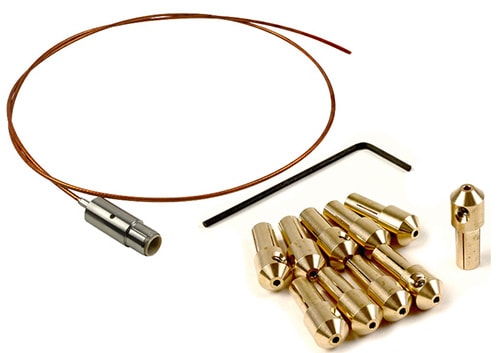Innovations in Vacuum Technology: The Crucial Role of Electrical Interfaces
Within the field pertaining to vacuum tech, one's capacity to uphold a reliable and consistent vacuum environment is vital to various scientific and commercial applications. Key to achieving this stability are vacuum electrical feedthroughs, which serve as vital elements that allow electrical connections to operate between the external environment outside a vacuum chamber and the equipment within it. These innovative devices enable transmission of signals, power, and data without compromising the integrity of the vacuum, rendering them indispensable for contemporary experiments and processes.
As industries and research fields continue to demand increased levels of precision and efficiency, the role of vacuum feedthroughs has evolved into increasingly important. Whether in semiconductor manufacturing, particle accelerators, or space simulation, these components ensure that necessary electronic controls and monitoring systems perform effectively. The following article delves into the complexities of vacuum electrical feedthroughs, exploring their structure, applications, and innovative advancements that continue to drive advancements in the field of vacuum technology.
Comprehending Electrical Connections
Electronic feedthroughs are vital parts utilized in sealed environments to facilitate the movement of electric data or energy while upholding the stability of the sealed seal. These mechanisms allow the connection of external electric circuits to machinery placed in sealed chambers without compromising the seal's. Usually composed of insulating materials and conductors, these components are designed to endure the conditions of high vacuum and can handle a range of electrical capacities and kinds of currents.
The structure of sealed connections changes based on their planned use, such as research equipment, manufacturing operations, and semiconductor production. Common materials used include ceramic materials for insulating and metallic substances for conductive routes. The selection of substances merely provides maximum electric conductivity but also plays a role to the structural stability and thermal stability required in vacuum conditions. Each feedthrough must be designed to stop issues, which could introduce contaminants and disrupt the sealed environment.
In contexts where exact measurements and regulations are essential, electrical connections play a crucial function. They enable for the tracking and management of devices such as sensors, microwave transmitters, and additional electrical systems without placing them to the atmospheric conditions outside sealed chamber. As tech progresses, improvements in connection design persist to improve their performance, dependability, and versatility, turning them essential in contemporary vacuum systems.
Improvements in Vacuum Technology

Recent developments in vacuum technology have substantially improved the performance and dependability of multiple systems. The creation of new materials has resulted in better performance traits in vacuum feedthroughs. Creative ceramic and metal combinations provide better insulation and lowered outgassing, which are critical for preserving the quality of the vacuum environment. These materials guarantee increased robust and longer-lasting electrical connections, essential for precise applications.
Moreover, the miniaturization of components has significantly contributed in the evolution of vacuum electrical feedthroughs. As industries demand miniaturized devices, engineers are designing feedthroughs that occupy smaller space while still delivering high performance. This trend allows for increased intricate systems without sacrificing on reliability. Cutting-edge manufacturing techniques, such as digital design and 3D printing, have facilitated the creation of detailed geometries that were not feasible with conventional methods, leading to more lightweight and efficient feedthrough solutions.
In conclusion, the integration of advanced technology into vacuum systems is a notable advancement. The use of monitoring devices and electronic monitoring has revolutionized how vacuum feedthroughs operate. These smart feedthroughs enable immediate data communication, granting better control over the vacuum environment. This advancement aids in the timely detection of issues and adjustments in the system, enhancing overall performance and safety. As vacuum technology continues to evolve, these advancements will play a critical role in various industries, from chip production to academic research.
Applications and Effects in Industry
Electrical feedthroughs play a critical role in various industries by allowing the flow of signals, energy, and fluids in vacuum environments. In the semiconductor industry, for instance, vacuum feedthroughs support the connection of electronic devices to the carefully managed conditions required for techniques like CVD and ion implantation. Their capability to preserve vacuum integrity while permitting connections is paramount for the precision and effectiveness of production lines.
In the field of research efforts, notably in accelerator physics and vacuum chambers, these devices are indispensable. They guarantee that equipment can work effectively without sacrificing the vacuum crucial for scientific tests. The reliability of vacuum feedthroughs strongly influences the standard of findings, making them important for progress in physics, materials science, and other disciplines.
Moreover, the increasing requirement for vacuum technology in the healthcare sector has highlighted the value of electrical feedthroughs. In uses like electron therapy and preservation of sterilized goods, these feedthroughs offer necessary connections while maintaining sterility and vacuum conditions. Their advancement not only improves the capabilities of medical devices but also increases patient safety and therapeutic efficacy, illustrating the broad impact of vacuum feedthroughs throughout different fields.